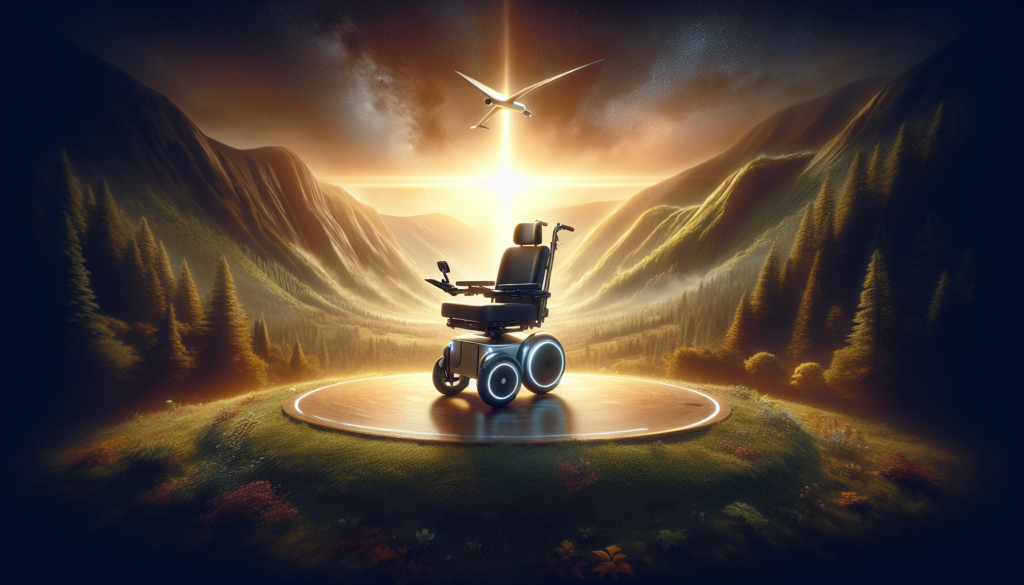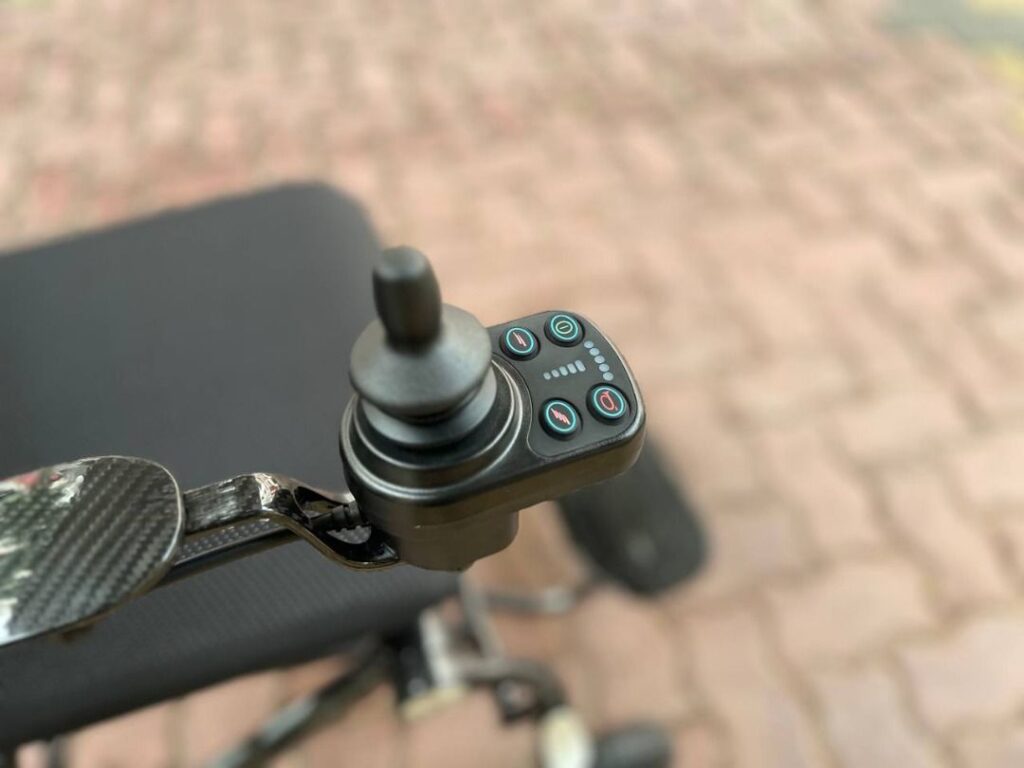Making the switch from a manual wheelchair to an electric wheelchair can be a significant life change, offering both excitement and uncertainty. This transition is often driven by the desire for increased mobility, independence, and ease of movement. However, it’s important to be aware of both the advantages and disadvantages that come with this shift. In this blog, we will delve into what to expect when changing to an electric wheelchair, helping you navigate the landscapes of new technology, adaptability, and the unique experiences that accompany this choice.

Understanding the Basics of Electric Wheelchairs
Electric wheelchairs are innovative mobility devices that offer users enhanced independence and ease of movement compared to traditional manual wheelchairs. These powered wheelchairs are equipped with electric motors, which provide propulsion, allowing users to navigate their surroundings with minimal physical effort.
The basic components of an electric wheelchair include a joystick or control panel for steering, rechargeable batteries, and a sturdy frame designed for comfort and support. Understanding these fundamentals is essential for new users, as it helps to demystify the technology and empowers individuals to make informed choices regarding their mobility needs.

Transitioning from a manual wheelchair to an electric wheelchair can sometimes feel overwhelming, but it also presents numerous advantages. Users benefit from increased speed and efficiency in navigating various terrains, significantly reducing fatigue associated with manual propulsion. However, it is important to consider factors such as the weight of the electric wheelchair, storage space, and battery maintenance. Familiarizing yourself with these aspects can ensure a smooth transition and help you maximize the benefits of your new mobility device.
Pros of Choosing an Electric Wheelchair
Switching from a manual wheelchair to an electric wheelchair can significantly enhance mobility and independence for users. One of the most prominent advantages is the ease of use that electric wheelchairs provide. With the simple push of a joystick, patients can navigate effortlessly over various terrains, reducing fatigue and strain on their arms and shoulders which often results from manual operation.
Electric wheelchairs also come equipped with advanced features such as customizable seating, tilt functions, and additional storage spaces, allowing users to experience a more comfortable and personalized mobility solution, perfect for enhancing everyday life. Another compelling reason to consider an electric wheelchair is the time saved in mobility. Traveling longer distances becomes less daunting, enabling users to access places that may have previously felt out of reach.
For instance, electric wheelchairs are often used to navigate through parks, shopping centers, and other urban environments. Additionally, they provide greater support during outdoor activities or social events, offering more opportunities for interaction and engagement. While the initial investment can be higher, the benefits in mobility, independence, and overall quality of life make transitioning to an electric wheelchair a worthwhile consideration for many users.
Cons of Switching to an Electric Wheelchair
Transitioning from a manual wheelchair to an electric wheelchair can be enticing due to the enhanced mobility and ease of use. However, there are several cons to consider before making the switch. One primary concern is the initial cost, as electric wheelchairs tend to be significantly more expensive than manual ones. This financial investment, coupled with maintenance costs such as battery replacements and repairs, can be a substantial consideration for many users.
Additionally, electric wheelchairs can be bulkier and heavier compared to their manual counterparts, leading to challenges in transport and storage. Users may find that navigating tight spaces or boarding public transport becomes more complex, which can counteract the convenience these devices offer. Moreover, while electric wheelchairs provide enhanced mobility, they also come with limitations in battery life and operational range.
Users need to be mindful of the battery’s state, as running out on a journey can be frustrating and potentially isolating. There’s also a learning curve in getting accustomed to the controls and handling of an electric wheelchair, which may pose a challenge for some individuals. These factors must be weighed carefully against the perceived benefits of switching to ensure that the decision aligns with one’s lifestyle and mobility needs.
Adjusting to New Controls and Features
Transitioning from a manual wheelchair to an electric wheelchair involves a significant adjustment period, particularly when it comes to new controls and features. Electric wheelchairs come equipped with various control mechanisms that can range from joystick controls to touch-sensitive interfaces. Users will need to familiarize themselves with the responsiveness and sensitivity of the controls, finding the right pressure and angle for optimal maneuvering.
This learning curve can be challenging at first, especially if users have spent a long time using a manual wheelchair. However, many electric models also allow for customization in settings to help improve the user experience and make the transition smoother. Moreover, electric wheelchairs often include additional features such as adjustable reclining seats, built-in storage compartments, and even advanced health-monitoring technologies.
These enhancements may greatly improve comfort and independence, but can also feel overwhelming at first. Users might find themselves experimenting and discovering the full range of their wheelchair’s capabilities over time. Overall, while the adjustment to new controls and features may take time and patience, the potential for improved mobility and independence in an electric wheelchair ultimately outweighs these initial challenges.
Maintenance and Care for Electric Wheelchairs
Furthermore, keeping the electric wheelchair clean is an essential aspect of maintenance. Users should wipe down the frame and seating areas to remove dirt and moisture, ensuring that electronic components remain dry and free from debris. Users may also consider scheduling professional servicing at least once a year, depending on the frequency of use, which can provide a more comprehensive check on the electronic systems and mechanical parts.
By investing time in the proper care of an electric wheelchair, users can enjoy the independence and mobility that it provides while minimizing the potential for repairs and ensuring a smooth, reliable ride for years to come.
Cost Considerations: Manual vs Electric Wheelchairs
When considering the transition from a manual wheelchair to an electric wheelchair, one of the most significant factors to assess is the cost. Electric wheelchairs often come with a higher initial price tag compared to manual chairs, which can be a daunting prospect for many individuals. Prices for electric wheelchairs can vary widely based on features, battery life, and manufacturer, with some models costing several thousand dollars.
Additionally, one must consider long-term expenses such as maintenance, battery replacement, and potential modifications required for your home to accommodate the new device. For many, the investment in an electric wheelchair is justified when weighing the benefits of independence and mobility it provides. On the other hand, manual wheelchairs are generally more affordable upfront and often entail lower maintenance costs.
However, the physical exertion required to operate a manual chair can lead to fatigue and health complications over time. Many individuals find that while the initial cost is lower, the long-term implications of using a manual wheelchair, such as potential strain injuries or reduced mobility, can offset those savings. Therefore, potential users should carefully evaluate both the immediate financial commitments and the long-term health implications to make an informed decision that aligns with their lifestyle and needs.
The Impact on Daily Activities and Lifestyle
Transitioning from a manual wheelchair to an electric wheelchair can significantly alter your daily activities and overall lifestyle. One of the most notable impacts is the added independence and mobility that electric wheelchairs provide. With enhanced maneuverability and the ability to travel longer distances without physical exertion, individuals can engage in activities that may have previously felt out of reach.
Daily errands, social outings, and even spontaneous adventures become more achievable as users can navigate varying terrains and environments with ease. The transition not only promotes physical comfort but also boosts confidence, opening up opportunities for social interaction and community involvement that individuals might have hesitated to pursue before. However, it’s important to acknowledge that this transition may come with challenges as well.
Electric wheelchairs require a different set of skills, including understanding how to operate the controls efficiently and manage battery life. Users might need to adjust to new maintenance routines, including battery charging and ensuring proper functionality of electronic components. Additionally, while many public places are equipped to accommodate electric wheelchairs, there can still be limitations regarding space and accessibility in certain environments.
By weighing these pros and cons, individuals can make an informed decision about their switch to an e-wheelchair and how it may reshape their daily experiences.
Embracing Your Newfound Freedom with an Electric Wheelchair
Transitioning from a manual wheelchair to an e-wheelchair can significantly enhance your mobility, independence, and overall quality of life. The ease of use that comes with an e-wheelchair, along with its ability to cover longer distances without fatigue, opens new doors to experiences and adventures that may have previously felt out of reach.
However, as with any transition, it’s vital to consider both the advantages and the challenges associated with this change, allowing you to prepare adequately for a smoother adjustment period. As you embark on this journey towards enhanced freedom, keep in mind the importance of thorough research, proper training, and ongoing support from healthcare professionals and the e-wheelchair community.
Embracing this change with an open mind can lead to newfound opportunities, independence, and a positive impact on your daily life. With the right mindset and resources, adjusting to your new e-wheelchair can be an empowering experience that allows you to embrace the freedom you deserve.
I think this blog post is really helpful for people who want to switch to an electric wheelchair. The pros and cons listed are really clear and understandable.
We’re glad you found the blog post helpful, Emily! At Eko Life, our team is passionate about providing accessible and convenient e-mobility solutions for everyone. If you have any further questions or concerns about transitioning to an electric wheelchair, please don’t hesitate to reach out to us via email at [email protected] or call us at +65 6589 8877. We’re here to help.
I’m considering switching to an electric wheelchair and this blog post gave me a lot to think about. The cost considerations section is particularly interesting.
Hi Oliver, thank you for reading our blog post ‘Transitioning to an Electric Wheelchair: What to Expect When Experiencing Freedom’. We’re glad to hear that our cost considerations section has sparked some thought for you. If you have any specific questions regarding the initial cost, maintenance, or long-term expenses of electric wheelchairs, please don’t hesitate to reach out. We’re more than happy to help. You can contact us at [email protected] or +65 6589 8877 for any further assistance. Good luck with your decision!
I liked how this blog post highlights the importance of adjusting to new controls and features. It’s not just about the wheelchair itself, but also about how it affects your daily life.
Hi Sarah Wong, thank you for sharing your thoughts on the blog post! We completely agree that adjusting to new controls and features is a crucial aspect of transitioning to an electric wheelchair. At Eko Life, we understand the importance of this adjustment period and offer support to our customers. If you have any more questions or concerns about electric wheelchairs, feel free to reach out to us at [email protected] or +65 6589 8877. We’re here to help!